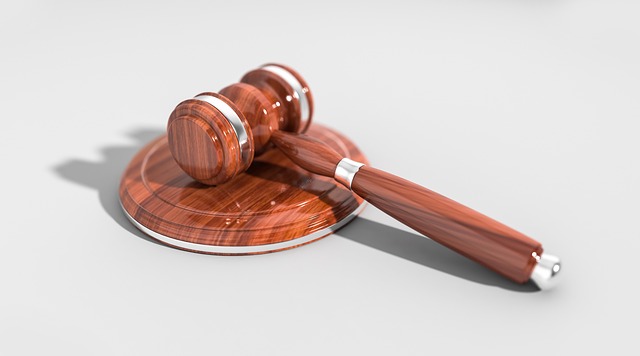Mail wire fraud, a complex digital crime involving deceptive emails and financial manipulation, demands strategic prevention and robust damage proofing. In defamation cases stemming from such fraud, quantifying reputational harm is key. This process involves meticulous documentation, evidence collection, and legal strategy to demonstrate actual damages. Effective navigation of the legal system, coupled with strong cybersecurity measures like two-factor authentication and regular employee training, offers protection against mail wire fraud, while also aiding in proving damages in related defamation cases.
Mail wire fraud, a sophisticated and insidious crime, involves deceptive practices through electronic communication. This comprehensive guide delves into the intricate world of mail wire frauds, exploring their understanding, legal implications, and strategies for proving damages in defamation cases. By examining key elements, the role of evidence, and preventive measures, we aim to equip readers with vital insights into navigating these complex scenarios effectively.
- Understanding Mail Wire Frauds: A Comprehensive Overview
- Legal Implications and Defamation Cases
- Proving Damages: Key Elements and Strategies
- The Role of Evidence in Mail Wire Fraud Investigations
- Preventive Measures and Case Studies
Understanding Mail Wire Frauds: A Comprehensive Overview

Mail wire fraud is a sophisticated crime that leverages digital communication and financial systems to defraud individuals and organizations. Understanding this type of fraud involves grasping how it operates, the methods employed by perpetrators, and the impact on victims. This includes recognizing phishing attempts, fake emails masquerading as legitimate communications from banks or government agencies, which often direct victims to click on malicious links or provide sensitive information.
In cases of mail wire fraud, proving damages is crucial, especially in defamation cases. The process involves meticulously documenting all stages of the investigative and enforcement process. This includes collecting evidence such as email exchanges, financial records, and communication logs to demonstrate the extent of the harm caused. Ultimately, the goal is a complete dismissal of all charges against innocent parties or, for those found guilty, strict penalties that reflect the severity of the crime, benefitting not only individual victims but also strengthening security measures within philanthropic and political communities.
Legal Implications and Defamation Cases

Mail wire fraud, a sophisticated form of deception, carries significant legal implications, especially when it involves defamation. Defamation cases arising from mail wire fraud present unique challenges in proving damages. The complexity arises from the intangible nature of reputational harm, which can be difficult to quantify. Legal professionals specializing in general criminal defense must navigate this landscape, ensuring that clients’ rights are protected.
In such cases, demonstrating actual damage is crucial for a successful defamation suit. This may involve showing financial losses resulting from the fraud, as well as any subsequent impact on business or personal relationships. Proving damages in defamation cases related to mail wire fraud requires a meticulous approach, considering the various economic crimes that can be involved. For his clients, securing justice necessitates a comprehensive strategy that addresses both the fraudulent act and its subsequent reputational fallout.
Proving Damages: Key Elements and Strategies

Proving damages in defamation cases is a crucial step toward securing justice and compensation for victims. To establish monetary damages, plaintiffs must demonstrate several key elements. These include the extent of harm caused by the defamatory statements, the loss suffered as a direct result, and the value of any gains made due to the false portrayal. This process involves presenting compelling evidence, such as medical records, financial statements, or expert testimony, to illustrate the impact on the victim’s reputation, career, and personal life.
Strategizing effectively is essential when pursuing defamation claims in jury trials. Legal professionals can help plaintiffs navigate complex legal landscapes, ensuring they meet the burden of proof and present a compelling case. By employing thorough fact-finding, gathering relevant documents, and utilizing persuasive storytelling techniques, attorneys can enhance their clients’ chances of winning challenging defense verdicts. Moreover, focusing on avoiding indictment and its potential consequences is a smart approach to safeguard the interests of those affected by mail wire frauds.
The Role of Evidence in Mail Wire Fraud Investigations

In Mail Wire Fraud investigations, evidence plays a pivotal role in unraveling complex schemes and securing justice. The nature of such frauds, often involving digital communication and financial transactions, demands meticulous documentation and analysis. For law enforcement agencies and prosecutors, collecting and presenting irrefutable evidence is essential to prove the intent and impact of fraudulent activities. This includes digital forensics techniques to trace online communications, financial records to demonstrate illicit transfers, and witness testimonies to shed light on the schemers’ motives.
While proving damages in defamation cases might seem different, the pursuit of justice in high-stakes scenarios shares similarities with these fraud inquiries. In both situations, establishing the extent of harm caused is critical. For instance, in the filantropic and political communities, where reputation is paramount, winning challenging defense verdicts relies on robust evidence. This could involve examining online campaigns that defame individuals or organizations, tracking the financial losses incurred due to fraudulent activities, and showcasing the long-term impact on public trust. Ultimately, the success of these cases hinges on the quality and comprehensiveness of the evidence presented in court.
Preventive Measures and Case Studies

Preventing mail wire fraud involves a multi-faceted approach. First, businesses should implement robust security measures like two-factor authentication and encryption for sensitive data. Regular employee training on phishing awareness and protocol for reporting suspicious activities is also crucial. Additionally, staying up-to-date with industry regulations and utilizing advanced cybersecurity tools can significantly deter potential perpetrators.
Case studies of successful fraud prevention in respective businesses highlight the importance of proactive measures. For instance, a financial institution with an unprecedented track record of detecting wire fraud early on attributed its success to continuous monitoring systems that analyze transaction patterns for anomalies. These high-stakes cases demonstrate that effective preventive strategies not only safeguard assets but also prove damages in defamation cases stemming from fraudulent activities, ensuring legal and financial protection for organizations across industries.
Mail wire fraud, a sophisticated and pervasive crime, demands a multi-faceted approach. By understanding its intricacies, recognizing legal implications, and employing effective strategies for proving damages, individuals and businesses can better protect themselves. The role of evidence in investigations is paramount, while case studies offer valuable lessons in prevention. When it comes to defamation cases stemming from mail wire fraud, Proving Damages plays a crucial part in securing justice and mitigating losses. Staying informed and adopting preventive measures are essential steps to navigate this complex landscape.






